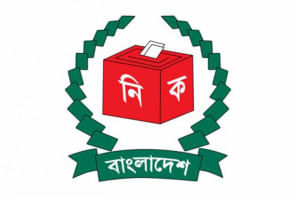Setting development priorities right in 2021

As the Covid-19 pandemic left a deep dent on the development trajectories of Bangladesh, the country must set its development priorities right in 2021. Bangladesh aims to achieve the stiff Sustainable Development Goals (SDGs) by 2030, and it aspires to become an upper-middle-income country by 2031.
However, to meet these development targets, Bangladesh had been confronting many development challenges even before the onset of Covid-19.
The slow progress in the structural transformation of the economy, the lack of export diversification, the high degree of informality in the labour market, the slow pace of formal job creation, the weak status of physical and social infrastructure, the slow poverty reduction and rising inequality remained the critical challenges.
The Covid-19 has aggravated many of these development challenges.
Looking back to 2020, Covid-19, in particular, has aggravated PIE that stands for three key development priorities namely poverty, inequality and employment. There is ample evidence that the poverty rate in Bangladesh has gone up significantly in 2020.
Many new poor people may not be able to get out of poverty quickly due to various factors. For many new and old poor, poverty may remain as a long-standing phenomenon.
Therefore, poverty will continue to be the foremost development challenge in 2021 as the economy is yet to recover from the shocks, supply chains of various economic activities are not fully operational and the social protection programmes are insufficient to address the sufferings of the poor.
There are also reasons to believe that Covid-19 has worsened the inequality situation in Bangladesh. In addition to the conventional factors, such as income opportunities, wealth, land-ownership and corruption, which aggravate inequality, Covid-19 has stimulated new avenues of inequality like the digital divide. Furthermore, job losses are yet to be fully recovered, and people are either engaged in inferior jobs or are low paid.
Concerns related to PIE suggest that no reason is there to remain complacent now and in the days to come. The apparent economic and social effects of Covid-19 can be deceiving.
The macro-level picture of robust growth in remittance earnings, positive growth in exports and the steep increase in the foreign exchange reserves can give rise to improper expectations of early and quick economic recovery.
In recent months, the negative import growth has also contributed to the piling of foreign exchange reserves. The negative import growth is not conducive for investment and business expansion - much needed for economic recovery in the days to come.
Also, the ground-level pictures of PIE can be very different from these macro pictures.
In such a crisis, the expected positive spill-over effects of macro variables may remain weak for long. The broken or suppressed supply chains and social networks in the economy may take a long time to heal and to generate employment and reduce poverty and inequality.
Therefore, while the current focus of the discourse is more on economic recovery, the social recovery may take a long time. The gravity of social losses might be much higher than that of losses measured through economic indicators.
The adjustment cost of recovery can also be huge. For survival, the crisis has forced poor-households to sacrifice prospects of better health, better education and a better life. There will be long-term intergenerational effects of these trade-offs.
Also, when schools and educational facilities have remained closed for months, it is possible that students from distressed backgrounds will face a higher burden, and many of them will be out of the education system permanently.
At the firm level, many micro and small enterprises have been struggling for their survival.
There are also new challenges emerging from post-coronavirus health complications. Even though most of the Covid-19 affected patients recover, many face various post-Covid health complications for which they need extra medical care.
The already stressed health sector needs major overhauling to address these challenges.
What should be the development priorities in 2021?
First, the current discourse on the development priorities needs to change its focus from the narrow GDP growth rate to broader development issues, i.e. poverty, employment and inequality.
Inability to effectively address these three critical development challenges will make the economic and social recoveries weak and fragile.
Therefore, there is a need for significant expansion of the allocation and coverage of social protection programmes.
Furthermore, the urgency to effectively sorting out the institutional challenges in social protection programmes to reach out to poor people is more than ever.
In this context, a comprehensive understanding of the economic and social losses due to the pandemic is warranted.
Therefore, the usefulness of credible and timely data cannot be overemphasised.
Second, the Eighth Five-Year Plan needs to be complemented by a comprehensive and pragmatic recovery plan of the economy. There is a necessity to align stimulus packages with the recovery plan. Many micro, small and medium enterprises and many vulnerable sectors are feared to remain out of support through stimulus packages.
Therefore, there is a need for a thorough reviewing of the challenges and constraints in implementing the stimulus packages. This review can help re-designing and re-targeting the stimulus packages.
Third, the Covid-19 crisis time has given the policymakers the much-warranted opportunity to undertake reform in critical economic domains.
No doubt, these reforms should aim at reducing the cost of doing business, simplifying regulations, and faster and cost-effective implementation of the mega projects and the SEZs, thus establishing a favourable environment for the domestic private investment and the foreign direct investment.
The writer is an economics professor of Dhaka University and executive director of South Asian Network on Economic Modeling (SANEM).

 For all latest news, follow The Daily Star's Google News channel.
For all latest news, follow The Daily Star's Google News channel. 



Comments